The Tyan S8230GM4NR is the second Tyan dual AMD G34 platform reviewed on ServeTheHome.com with the Tyan S8236WGM3NR being the first. Like the previously reviewed board, the S8230GM4NR packs two socket G34 CPUs and up to 24 Magny-Cours cores and sixteen DDR3 DIMM slots and four Intel LAN ports in an EATX form factor. With AMD’s Magny-Cours architecture, AMD is giving the user more physical cores than Intel, per package, versus the Xeon E, L and X series CPUs. One of the most exciting things about the G34 platform is that many of today’s boards will be compatible with the new Interlagos CPUs (server version of AMD’s upcoming Bulldozer architecture). The TyanS8230GM4NR isalso a more conventional PCB layout than the S8236WGM3NR.
Test Configuration
Recently I acquired two AMD Opteron 6164 HE’s and eight Opteron 6166 HE’s and two 6166 HE chips were used for this review.
- CPUs: 2x AMD Opteron 6166 HE’s
- Motherboard: Tyan S8236WGM3NR
- Memory 8x 2GB ECC DDR3 UDIMMs
- OS Drive: OCZ Agility 2 120GB
- Enclosure: Norco RPC-4224
- Power Supply: Seasonic X650 (650w Gold level power supply)
I have eight 6166 HE’s and two 6164 HE’s and really like the chips. Dual 6166 systems pull under 250w at 100% load and quad systems under 460w.
Board Layout
The EATX Tyan S8230GM4NR is a fairly sizable board with standard CPU and RAM staggering which helps airflow in rackmount enclosures.
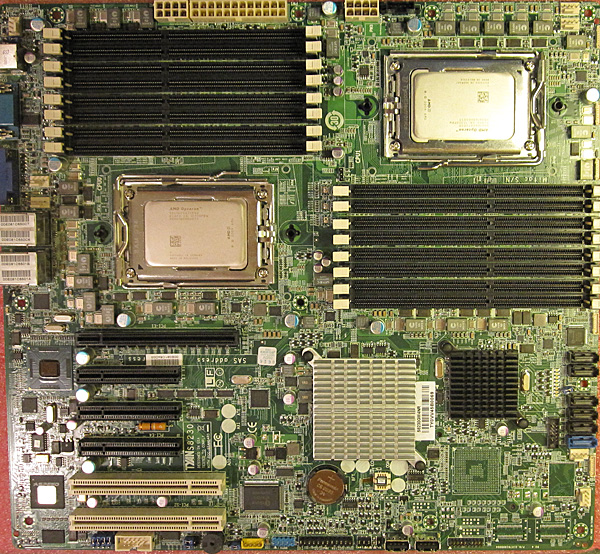
Although the Tyan S8230GM4NR does not have onboard SAS, it does have a multitude of expansion options including a PCIe x16 slot, three PCIe x8 slots and dual legacy PCI slots. One has the option of adding additional NICs such as 10GbE NICs or storage controllers to enhance the flexibility of the system.
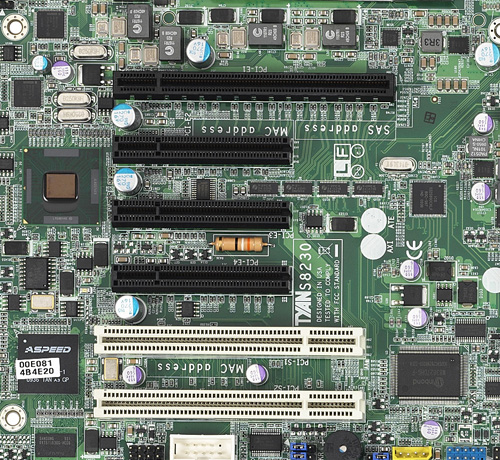
These six SATA II 3.0gbps ports all are connected through the AMD SP5100 that includes Promise RAID 0/1/10/5 under Linux. The other primary storage related internal features are the dual internal USB headers where one can deploy the machine with flash drives when either an application or OS requires it or when one desires a local recovery tool image to be mounted inside the chassis. One can see where the LSI SAS2008 and dual SFF-8087 connectors are located on the S8230WGM4NR variant of this board.
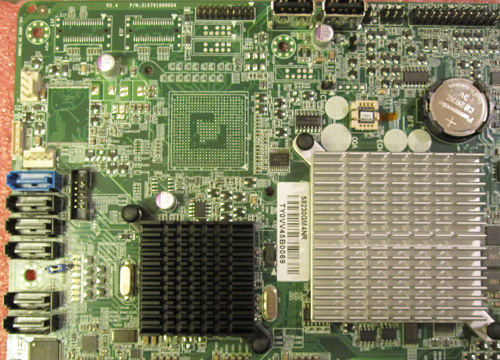
Rear I/O panel connectors are basic but show off the board’s strength with two USB ports, a VGA port, serial port and four RJ45 connectors linked to the dual Intel 82574L NICs and an Intel 82576EB. It is interesting that Tyan uses an Intel controller for the management NIC because vendors like Supermicro use a less expensive Realtek 10/100 NIC for management features. Furthermore, it should be noted that Tyan allows a user the flexibility of using the management NIC as a data NIC.
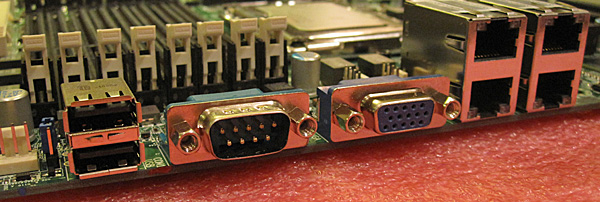
Overall the Tyan S8230GM4NR has a fairly standard layout for a server board in this class.
Features
Tyan’s IPMI 2.0 interface will be fairly intuitive if one is accustomed to other modern KVM-over-IP implementations. One can either use external IPMI tools or navigate to a web based interface. I will note that I initially had a few problems with the IPMI 2.0 management NIC not showing up on my network but this was resolved by flashing the BMC BIOS to the newest version. Recently, ServeTheHome.com looked at Tyan’s IPMI WebGUI in-depth.
Being able to remotely manage servers through the IPMI interface is a major time saver. One can troubleshoot common issues, including kernel panics that leave one without access to the machine otherwise, remotely. Even things such as BIOS changes can be accomplished through the web GUI. Users will find standard features such as the ability to control power functions of the server through the baseboard management controller and web interface along with standard features like remote monitoring of fans, temperatures and other sensors.
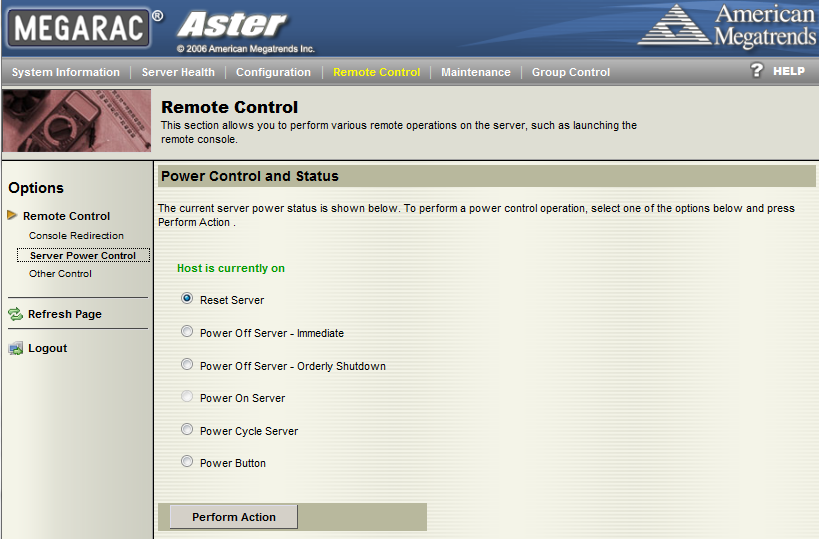
One of the most important features is the JAVA based KVM-over-IP functionality that allows a user to do several things. First, one can use a keyboard and mouse on a local machine to control the host. Second, one can remotely mount ISOs, local optical drives and etc. onto the server. These features are important to most users unless an external KVM-over-IP solution is used and one has a network switched power distribution unit (or multiple if a redundant PSU is used) that can power cycle a server.
Overall, Tyan provides the requisite remote management functionality to compete in the DP server market. To any potential buyer, I would strongly suggest getting a board with these features as they have become necessary management tools for machines not acting as primary workstations. In the near future Tyan’s remote management capabilities will be the subject of an in-depth piece on this site in the near future.
Conclusion
Overall the Tyan S8230GM4NR is a nice board with four onboard Intel LAN ports, dual CPU sockets, and a future upgrade path. At this point, the AMD Socket G34 is looking like a slightly better investment than the Intel LGA 1366 platform because the G34 systems will be able to accept a new generation of CPUs while the Intel platform is essentially a dead end at this point. With plenty of expandability, the Tyan S8230GM4NR shows promise with four Intel Gigabit ports and plenty of cores and DIMM slots packed onto the board making it a great VMware ESXi or Microsoft Hyper-V platform.




Greetings, has anyone tried a graphics card in the x16 slot of this motherboard?
Does anyone know whether drives connected to the AMD SP5100 will be usable to boot Solaris 10 (or OpenIndiana b148) without compiling a kernel? I mean just as regular disks (IT, JBOD), I would not use any RAID modes the AMD SP5100 offers.
Thanks,
TLB
Where can I download that IPMI webgui application? I have downloaded IPMI tool for s8230 however after extracting the zip file, I see only a s82300102.i06 !!!
How can I open that file?
You just need a web browser and a PC on the same network as the IPMI NIC. Then browse to the IP address of the IPMI NIC and you will be greeted with the login page.
Dont gun me down, but how would this go as a multimedia server board for WHS, running a few TV tunner cards and a Raid card…. what is the onboard graphics like (mb’s wise)?
Also off topic, but would a PCI-X raid card work with a PCI legacy slot?
The onboard graphics cannot run a HD display and only have VGA out. There is also no sound. You would probably want to add a HDMI/ Display port video card at minimum. The onboard GPU is really just for basic remote management. Generally these sit off of a PCIe x1 or PCI bus so bandwidth is very limited.
works well with GTX450 with 1 VGA ,DVI and HDMI
add an sound card works as well
add 16Gb unbuffered non ECC memory works (with memory beep error)
downgrade the DDR3 frequency
mandriva 2011 and unbuntu 12.04 also works
but must wait 15mn before rebooting and hard reset fails
why ?